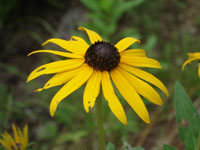 Perennials are defined as plants that come back every year. Of course, that also depends on what hardiness zone you are in. If you’re in zone 3 and the perennial plant is only rated for a zone 5, the bitter winter winds and extremely low temperatures your area experiences will kill the plant.
Perennials are defined as plants that come back every year. Of course, that also depends on what hardiness zone you are in. If you’re in zone 3 and the perennial plant is only rated for a zone 5, the bitter winter winds and extremely low temperatures your area experiences will kill the plant.
I can’t stress enough to always know your area’s hardiness zone, and make sure you plant only plants that are rated to survive in your hardiness zone. In doing that, you will be able to experience years of beauty and enjoyment from your perennial plants.
Some perennials die completely back to the ground each winter leaving no trace while others leave seed heads, wispy stalks, and colorful stems to add interest and structure to the otherwise bland winter landscape.
It is a good idea to permanently mark your perennials with some sort of marker or label so you know where they will be coming back up next year. It is very easy to forget, and then you start digging around to amend the soil or add new plants, and all of the sudden, you’ve dug up last years great new plant addition!
You will also want to clean up around your perennial plants in the early spring, removing old stalks, leaves, and debris to allow the tender new spring growth the chance to grow unobstructed and put on another spectacular display.
Keep in mind, most perennials only bloom for a few weeks out of the year. But the show they put on is more than worth the short bloom times! Plus, they come back year after year without having to replant.
If you want to have a long-blooming perennial garden, there are a couple of things you can do to extend your bloom season. You can plant a variety of perennials with differing bloom times to extend the bloom time in your garden, or tuck in annuals that have long-lasting blooms the majority of the growing season.




